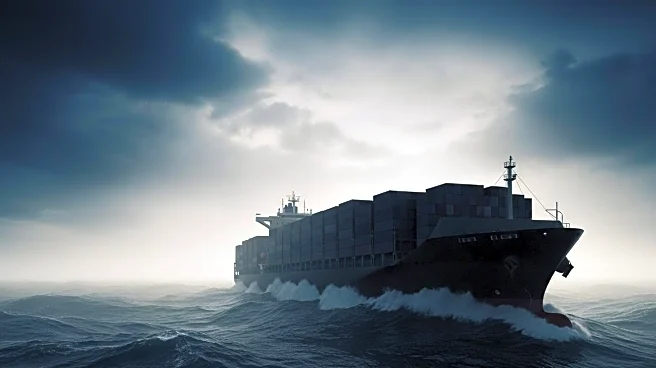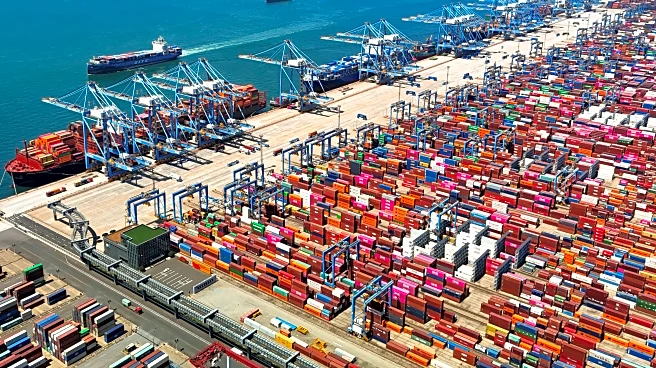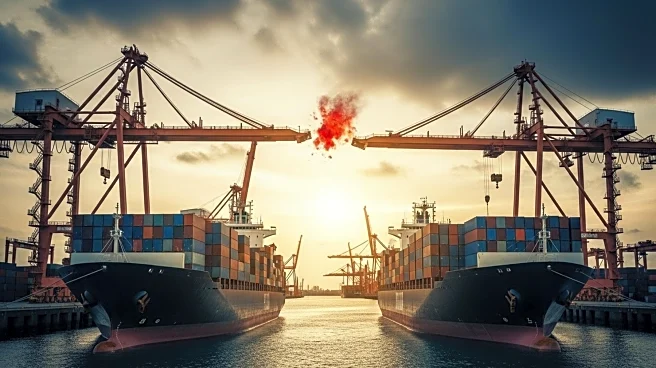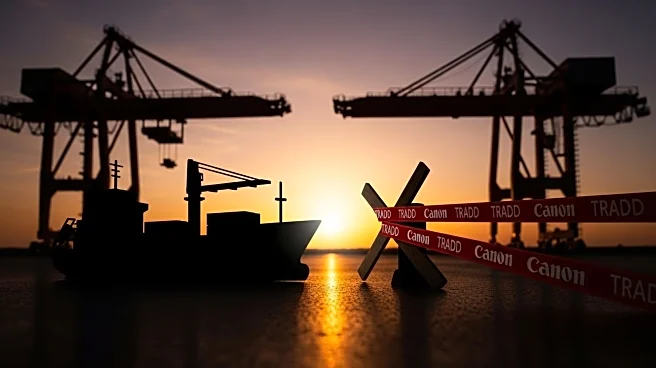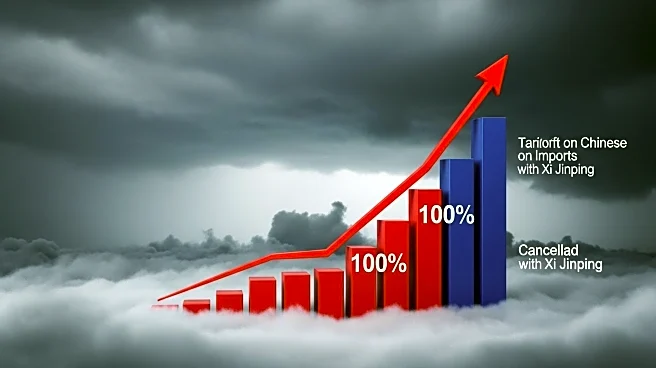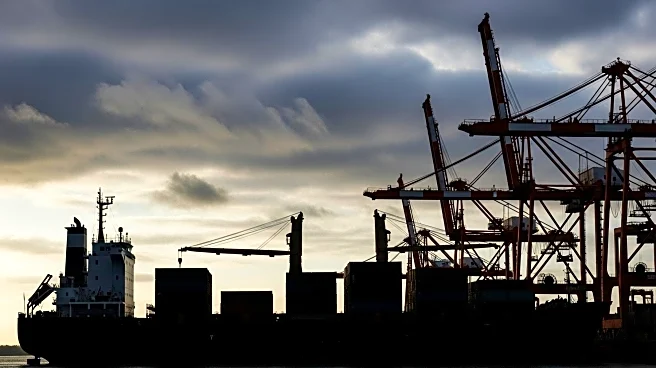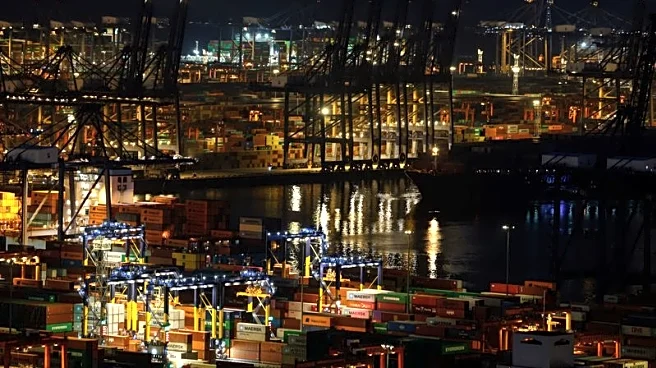What's Happening?
China has announced new port fees on U.S.-owned, operated, built, or flagged vessels as a countermeasure to U.S. port fees on China-linked ships. The fees, set to begin on Tuesday, are part of a broader trade conflict between the two nations. President Trump has responded by imposing 100% tariffs on Chinese exports to the U.S. and export controls on critical software. Analysts suggest that the Chinese fees could affect many public shipping companies with U.S. stock exchange listings, potentially impacting the global shipping industry. The fees are expected to apply to vessels with significant U.S. investment, affecting companies like Matson and CMA-CGM’s American President Lines.
Why It's Important?
The imposition of reciprocal port fees and tariffs between China and the U.S. adds complexity and cost to global trade networks, potentially harming exporters, producers, and consumers. The shipping industry, already under pressure, faces increased operational costs and logistical challenges. The tariffs could lead to higher prices for consumer goods, affecting industries reliant on Chinese imports, such as technology and electronics. The trade measures reflect ongoing tensions between the two superpowers, with potential implications for international economic stability and trade relations.
What's Next?
The fees and tariffs are set to take effect soon, with potential impacts on shipping schedules and costs. Stakeholders in the shipping industry may need to adjust their operations to mitigate the financial impact. The broader trade conflict could influence upcoming trade talks between President Trump and Chinese leader Xi Jinping, potentially affecting future trade agreements and economic policies. The situation may lead to further retaliatory measures, impacting global supply chains and economic growth.
Beyond the Headlines
The trade conflict highlights the strategic importance of shipping and maritime regulations in international relations. The reciprocal fees underscore the competitive dynamics between the U.S. and China in global shipping and trade. The situation raises questions about the long-term implications for international trade agreements and the role of protectionist policies in shaping global economic landscapes.

